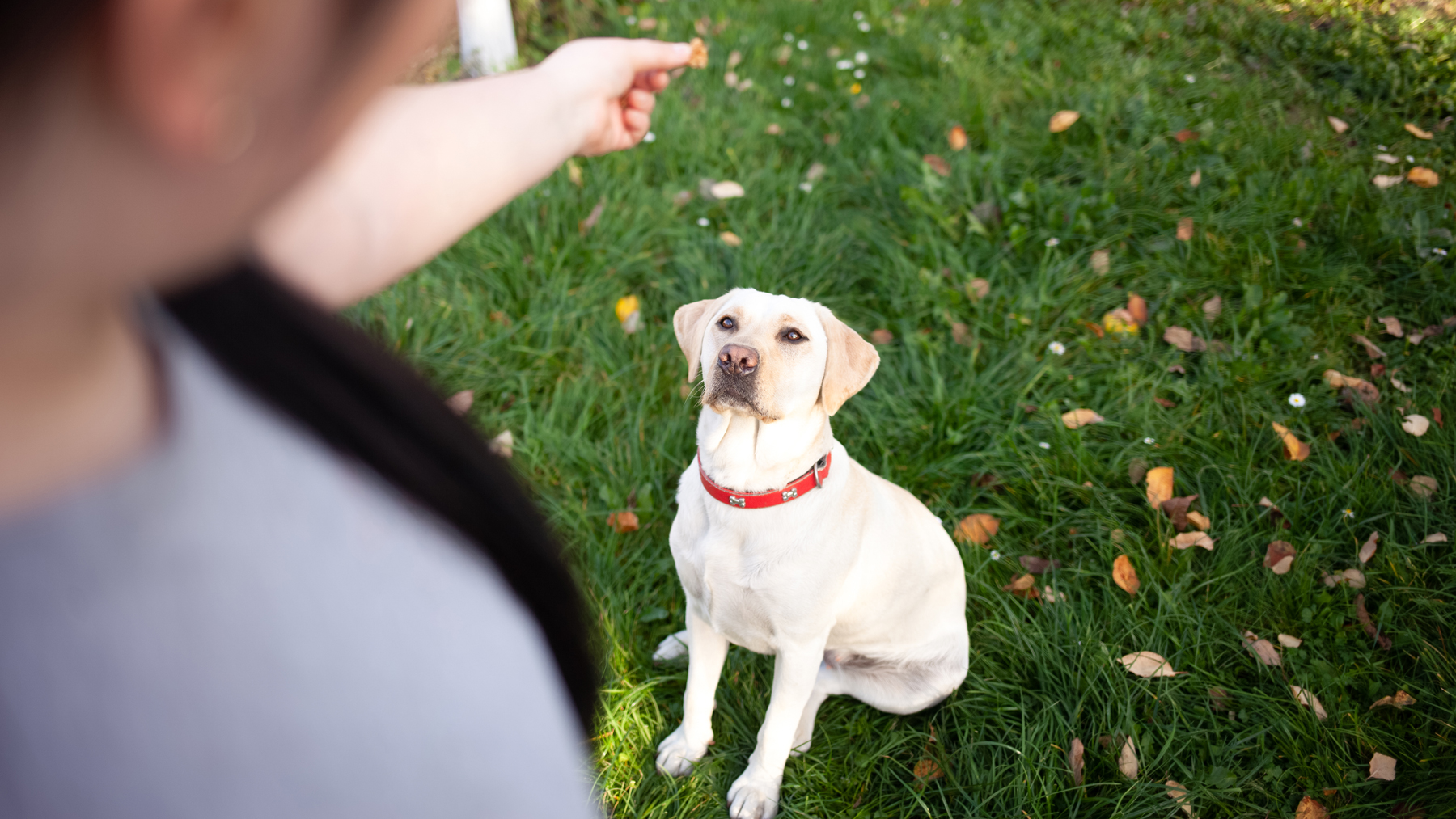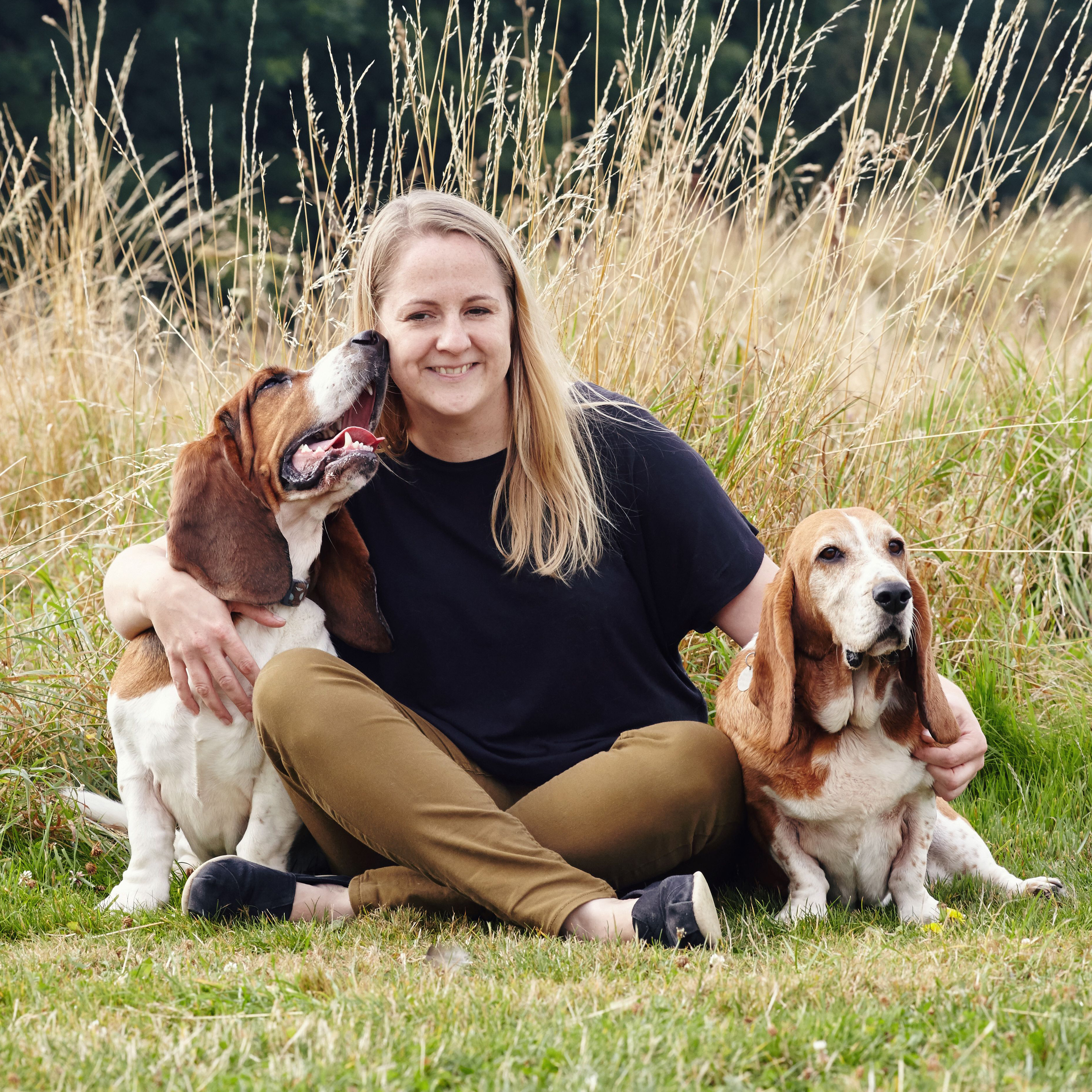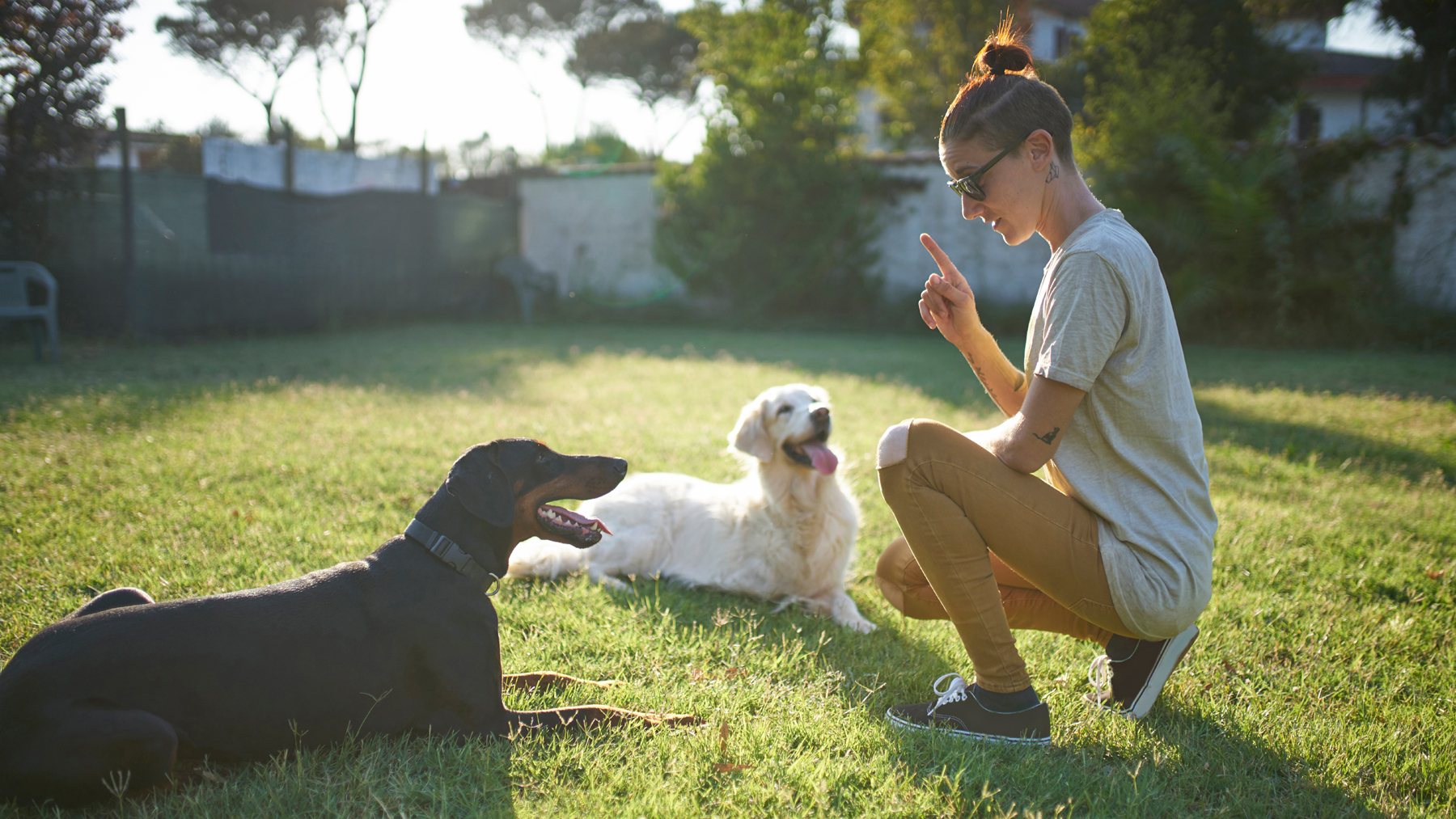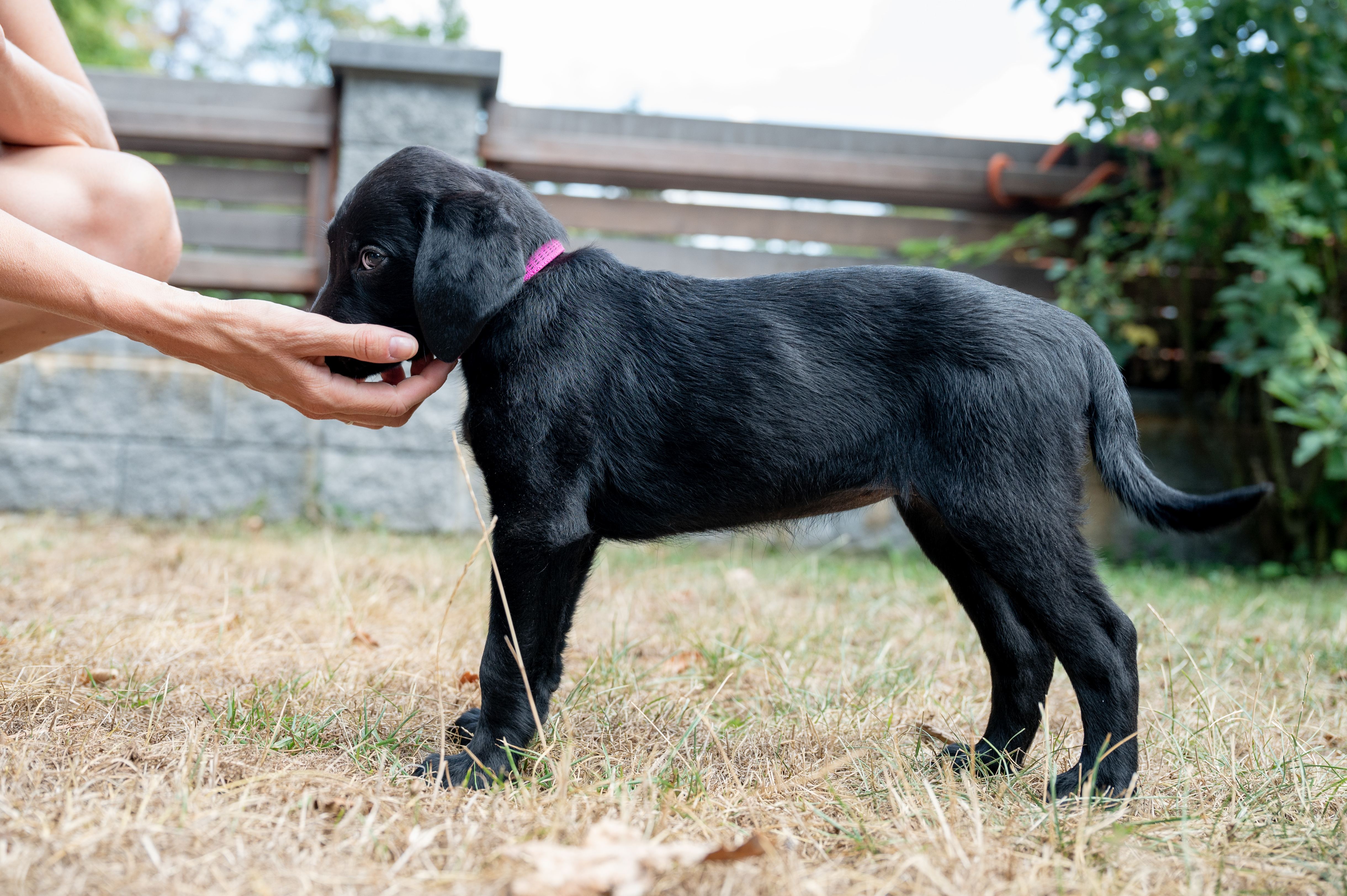Five of the most important dog commands and how to teach them
Strengthen your bond with your dog by teaching these five important cues today

If you’ve welcomed a new dog into your home - a puppy or a rescue dog - then you’re probably wondering what the most important dog commands are to teach them at first. These exercises can include ways to keep them safe - under control, off-leash, or around your home. There’s also exercises we can work on that can help your dog feel relaxed or to boost their mood through fun tricks and games.
Traditionally we’ve used the word ‘command’ in relation to the basics of obedience - the exercises that we train our dogs to do when asked. As a modern force-free trainer, I much prefer to use the word ‘cue’ when discussing the words you’re using to request specific behaviors from your dog. Command sounds harsher - like we’re forcing the dog to do the exercise - rather than prompting or asking them to do it. When we’re training with our dogs, we want them to get something positive from it too. Alongside being rewarded with some of the best puppy toys for playtime we also want them to feel supported and mentally enriched, not forced or frustrated.
Training is really important when it comes to living alongside dogs - it enhances communication, reduces stress, and creates a happier, well-adjusted pet. So let’s dive into the most important cues you can work on today.

Caroline Wilkinson is a Certified Animal Behaviourist. She is a Full (assessed) Member of the APDT and INTODogs – as well as a Registered Training Instructor (ABTC). Caroline is also a Certified Real Dog Yoga Practitioner and an Applied Canine Zoopharmacognosist.
The most important dog cues you can teach a dog
1. Their Name
It sounds simple, but just by teaching your dog to turn towards you quickly when you say their name is a winner of an exercise. It can allow you to get an instant bit of connection without your dog having to work hard. In distracting situations, such as a dog park, your dog is much more likely to be able to turn to look at you, than to do a more complex trick or even hold a basic static position like a ‘sit’.
How to teach it...
To help your dog learn the significance of their name it’s time to play my simple ‘Name Game’. Start by grabbing a handful of yummy treats cut up nice and small! Say your dog’s name once and if they look at you mark this moment with a clicker or a ‘yes’ and then throw a treat for them to go and get.
As soon as they’ve eaten the treat, repeat this again - saying their name and throwing a treat in the other direction when they respond to you. If your dog doesn’t respond to their name, that’s ok! They don’t know the importance of this word yet. Rather than repeating saying their name, use another sound to get their attention - such as kissy noises or clicking your tongue. When they look up towards you, reward them with that thrown treat again.
Get the best advice, tips and top tech for your beloved Pets
Over time you’ll find you don’t need the attention sound - just saying their name will be enough. Practice this for 3 minutes every day and you’ll soon get an instant response to their name!
2. Recall
Teaching our dog to come back to us when they’re off the leash is probably one of the MOST important exercises we can work on. This isn’t just for off-leash walks but for if you need to get your dog to come back in from your yard or they accidentally get out of your front door.
How to teach it...
Recall is an extension of the ‘Name Game’.
This time, when you say your dog’s name and they look at you, run slightly away from your dog saying a recall cue such as “here” at the same time. They’ll hopefully follow you to see what’s going on and you can then place a few yummy treats on the floor in front of them when they get to you. Run off in another direction, saying “here” again - and when your dog catches you up, reward them again.
Once your dog starts to think it’s fun following you when you say that word, you can start to do static recalls - where you’re simply standing still and asking your dog to come towards you.
When it comes to recall, we want to make sure that only the best dog treats are used as a reward - pieces of their usual dinner just won’t cut it! This cue can be a tricky one to master so if your dog is struggling with it, have a read of the reasons why your dog’s recall isn’t reliable (and what you can do about it).

3. Settle / Relax
This isn’t an exercise many pet parents think of to teach their dogs. However, the ability to do nothing for a while can be so useful when you have visitors over, you're vacationing with your dog, or even taking them to group dog training classes.
How to teach it...
When teaching this, I start with using a bed or mat on the floor to help the dog understand what they should be doing. Start by teaching them first to go to that bed on cue.
Next, build up the time they’ll happily hang out on the bed slowly - giving a treat on the bed every few seconds to start with, then eventually every few minutes. Finally, add in some distractions. This could be you walking around the bed, clapping your hands, or even going to knock on the front door. Any time you create a bit of disturbance, go and reward your dog by placing a treat on their bed if they’ve managed to stay there.
4. Stop
I love teaching my dogs a “stop” on cue. It’s great for when your dog starts to move ahead of you on a walk or if they get over excited by younger visitors to your home and you’d like them to just stop and stay still for a moment.
How to teach it...
Start by teaching this with your dog moving towards you - you can wait for them to do this or ask them to ‘wait’, move away from them and then encourage movement towards yourself with a kissy noise.
As they move towards you say “stop” and raise your hand above your head holding a treat. If they pause, even if only for a microsecond, mark this moment and throw the treat towards them or behind them. Repeat this stage for a good couple of weeks before trying it with your dog moving away from you. You can build this up to an even more controlled exercise, by asking for a ‘sit’ or ‘down’ after the ‘stop’ if your dog is comfortable with one of those positions.
5. Leave It
Teaching your dog to leave or drop items when you ask is really important when it comes to keeping them safe. Dogs are scavengers by nature, as well as being intrigued by new things they might find at home or in the world. If they find unsafe things to pick up, such as a cooked bone or medication - or even something they shouldn’t have, such as another dog’s toy - being able to positively request that item back will make life much easier for everyone!
It’s important to understand that if you keep removing things from your dog’s mouth with force, they are much more likely to start displaying guarding. We want our dogs to see us as providers of good things rather than always being someone who takes things from them.
How to teach it...
To start teaching this exercise, I like to build up a really positive association with the cue first. So just simply saying “leave” or “drop” and then tossing a treat to the floor. Over a few days of doing this at random times throughout the day, you’ll find your dog starts to look to the floor for the treat when you say the cue. They’ve now learnt they get really yummy things whenever they hear that word.
Next we can try this when our dog has something in their mouth that they’re usually allowed - such as a toy. Play a little game of tuggy with them, then say your “leave” or “drop” cue. When they spit out the toy to look for that treat on the floor, place multiple treats down for them as a ‘jackpot’ reward.
Finally, you can start to use this when you see your dog about to move towards something they shouldn’t have - such as a dropped piece of onion while you’re cooking or Grandma’s glasses! As they look towards it, say “leave” and then again give them a jackpot reward.
At what age can you teach a puppy cues?
Start your training early with your puppy! They can be taught foundation behaviors from an early age, as soon as you bring them into your home. I’d always focus on creating a positive response to their name to start with - as this is the easiest game for them to get right. When you are training with your new puppy, keep any training sessions to a maximum of three minutes. You can also use small pieces of food to reward any moments of great behavior that your puppy offers naturally - be that toileting outside, going to lie on their bed, or picking up their own toy instead of something of yours.
When a puppy first joins your family, the most important thing is that they get good quality rest and don’t get overwhelmed by too many new experiences all at once.

Is it harder teaching cues to an adult dog?
There’s no such thing as ‘you can’t teach an old dog new tricks’. Any age of dog can be taught new tricks or behaviors. However, your older dog may need a bit more time to realise that some of these new exercises are more valuable to them than their learned patterns of behavior. For example, if your new rescue dog LOVES to bark at the doorbell, it may take them some time to realize that they’ll get a lot more food and attention for going to pick up a toy when they hear that sound instead.
Avoid punishing behaviors that your adult dog does that you don’t enjoy - instead focus on reinforcing heavily all the behaviors you do love. This will help your dog to understand what works and what doesn’t.
Training is much more than just traditional obedience. It’s less about getting your dog to ‘obey’ the commands or cues you use, but more an opportunity to bond with your dog and strengthen your relationship. It’s also a way to help keep your dog safe - both on and off leash. Training allows you to nurture a good member of the canine community, ensuring that other people appreciate spending time with your dog just as much as you do.
It’s important to understand that context is everything when it comes to the initial stages of learning for our dogs. Trying to teach them something brand new in the middle of a busy dog park is setting them up for failure. Start out at home, without distractions, then once they have each behavior nailed down - you can take them out on the road!
To ensure success in your training, enlist the help of a force-free dog trainer to guide you through the step-by-step process. There are plenty of options both in-person and online. Just make sure that you are looking for someone whose methods align with your own. Look for a trainer who uses a rewards-based approach rather than fear or punishment. The Association of Pet Dog Trainers is a great place to start - they have trainer memberships in a number of countries including the US and the UK.

Caroline Wilkinson is a Certified Animal Behaviorist. She is a Full (assessed) Member of the Association of Professional Dog Trainersand INTODogs – as well as a Registered Training Instructor (ABTC). Caroline is also a Certified Real Dog Yoga Practitioner and an Applied Canine Zoopharmacognosist.
As the founder of digital pet coaching service Barket Place, Caroline has a passion for improving connections between human and hound, with a focus on relationships and reduction of stress for canines living in a human world. She helps pet parents, like you, to work through challenges they may be experiencing with their dog's behavior, so that they can get back to the important job of loving their dog.
Caroline writes for Edition Dog Magazine, as well as a number of trusted pet brands. She also speaks around the country – presenting workshops and webinars with a focus on living more mindfully alongside our canine companions. She is also the co-host of chart-topping podcast, ‘Supporting Both Ends of the Lead’ and has spoken about dangerous dogs on BBC Points West and BBC Radio Bristol.
